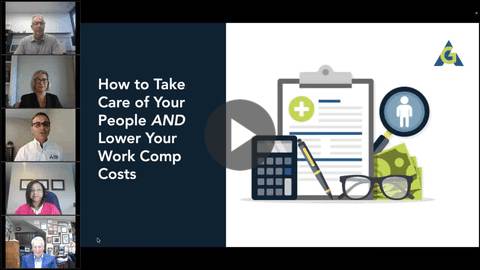Here's Why a Group Health Captive Is Worth Considering
For the purposes of this article, we’ll assume two things are true:
- Your organization invests significant time and money into offering employees a high-quality health insurance program in order to attract and retain top talent.
- Managing the cost of this investment is incredibly challenging.
If you are fed up with the huge increases in premiums that have become so common in today’s insurance market, you are far from alone. Another common frustration is the lack of insight you likely receive into claims data on your plan. Or maybe this better describes your situation: you currently self-fund your health plan and are overwhelmed by the stress of managing volatile, high-cost claimants?
If you answered yes to any of these questions, a group health captive arrangement is an alternative risk model worth your consideration.
Captives are growing in popularity, and it’s easy to see why. This strategy gives employers a better chance to manage the volatility that can occur with a group health plan, with the end result being a more competitive health insurance plan to offer current and prospective employees.
While the sweet spot has historically been in the 50-250 employee range, larger employers are finding success with group health captives because of the unique contractual financial protections built into the solution.
How It Works
The key: keep things simple. Group health captives come in all shapes and sizes, but they all operate in a similar manner. Members of a captive use their shared size and scale to pool risk in the stop-loss market in an effort to improve pricing terms and add contractual protections such as a competitive annual rate cap and can even offer a provision to help you avoid a new laser at renewal.
In most cases you’ll keep your key partners in place, including your medical TPA, your health plan network and your pharmacy benefit manager. Captive members also benefit from having access to national best-in-class cost containment partners which can lead to lower healthcare costs. Finally, captive members have opportunities to network at annual member meetings, where they can learn best practices to implement with their own organization.
Here are a couple more things to consider:
- Say your organization fully-insures its health plan and you are interested in looking at self-funding with a captive arrangement. In that case, it is recommended to complete a feasibility study to understand if self-funding makes financial sense at this time. Your employee benefits consultant can assist with that analysis.
- If you are already self-funding and have historically purchased stop-loss insurance, the contractual provisions built into a group captive’s stop-loss contracts are often superior to what you can purchase on your own. The rate cap, in combination with a no new laser at renewal provision, can buy you enough time to plan ahead for a known, recurring high-risk claimant.
Curious if a group health captive is feasible for your organization?
This content is not intended to be exhaustive nor should any discussion or opinions be construed as legal advice. Readers should contact legal counsel or an insurance professional for appropriate advice. Gregory & Appel is neither a law firm nor a tax advisor; information in all Gregory & Appel materials is meant to be informational and does not constitute legal or tax advice.
